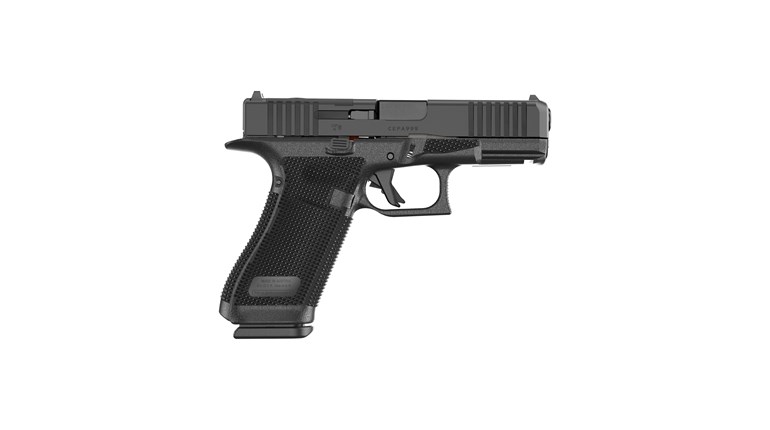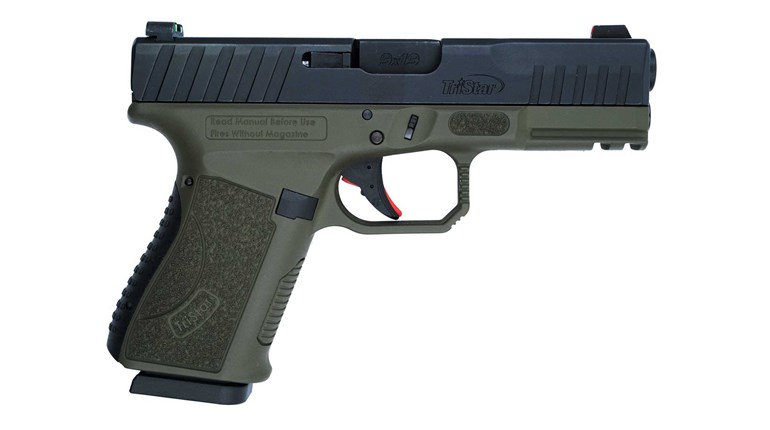
We aren’t enthused about what appears to be an accelerating ride off into the sunset. The pony in question is “technology,” and the rider, the not-so-venerable “.40 S&W.”

We hope our gloom is premature, tinged with guilt as it is. As early adopters of the 10 mm, we concede the appearance of the .40 “Short and Weak” (as it was often derided in the early ‘90s) evoked no enthusiasm. We were not, shall we say, subdued in offering that opinion, either.
Long story short, our conclusions were at best incomplete: The .40 S&W is a clever, useful and versatile addition to autoloader options, and in slightly more than 25 years, the successes of the caliber are many. In law enforcement, self-defense and competition circles, it elbowed its way to, or at least near, the top in multiple respects.
The quarter-century bubble, it seems, may be bursting. As we said, technology—mainly in the form of projectile construction—has changed a lot since the “shorty” .40 emerged. The middle ground that the .40 S&W so skillfully trod between heavy bullet, large frame .45 ACP guns and light-recoiling, small-framed 9 mms may be slipping away due to bullet architectures that gives substantial performance “facelifts” to those two classics.
If it does, we think it’ll be both a shame and a mistake. No pistol we know of demonstrates this better than the MOS Glock 35. … The .40 S&W is a clever, useful and versatile addition to autoloader options.
As we’ve suggested, the G35 can be at least four pistols in one—each and every variation a gem. As we discussed at length here, the MOS guns in 9 mm are marvels of adaptability. But for really mammoth versatility, the .40-caliber G35 wins in a walk-off.
Right out the box, the G35 can do most any job well, except discreet carry. As a full-sized pistol, it’s an outstanding centerfire platform that allows good pistol craft to develop with no material compromises. The improved trigger that the “long slide” or competition Glocks offer usually means less accommodation time for the distinctive Glock trigger system, too. Couple this with the long sight radius—more than 7.5 inches—and many folks find the pistol unusually accurate as well. About the only thing we’d recommend an upgrade on are the sights: The folks in Smyrna start simple here, knowing the likelihood of replacement according to personal tastes or vision needs is very high. Ultra-rugged 15-round standard mags complete the G35 package, though 10-rounders are available for owners in discriminatory states.

In shooting terms, heavier .40-cal. bullets tend to be softer recoiling and great for the range. Many defensive loads are also available (thanks to wide law enforcement adoption of the .40), and generally work down in bullet weight to literal screamers (1,200 feet/sec or more) with ample defensive power.
That’s “Gun One,” and a fine, versatile one if you never did another thing.
“Gun Two,” however, is where we really got hooked: “Minor” power factor. This from Atlanta Arms is a superior example of commercial “minor,” but in our early USPSA days we went well below this combination in terms of feel by handloading 200-grain bullets. A 130-power factor load that was punishingly accurate yet seeming murder on knockdown steel was under 200 ft-lbs: Try to get there in any other caliber! (For reference, essentially recoil-less .22LR, depending on barrel length, is roughly 90 ft-lbs in a pistol). We leave it to you to run down the venues in which this would be, as the saying goes, “the bomb.” We leave it to you to run down the venues in which [.40-caliber G35] would be, as the saying goes, “the bomb.”
By the way, if there’s a way to get a new shooter to enjoy center-fire handgunning that is superior to soft .40 S&W, we’re all ears. No wrist-snapping, just the nice slow “roll” of low pressure.
“Gun Three” is a G35 at major power factor. The 170-PF comes easily, too, and with about a 4 percent increase in energy compared to 115-grain 9 mm barely making a minor PF. If power factor is less of a concern, lighter bullets transmogrify into .40-caliber lasers for games like Steel Challenge. Our favorite? This Nosler. To say that some handgun hunting applications are available at this power level is a no-brainer, as Buffalo Bore makes clear here. Any way you slice it, the .40 S&W in a G35 can get to some serious “oomph” if you need it.

“Gun Four” is where the Gen4 MOS features come heavily into play. These are essentially standard pistols with all the Generation 4 adds—notably dual-coil spring system, reversible mag catch, enhanced grip texture and interchangeable backstrap/beavertail panels—but also with a slide pre-machined for a red-dot or “reflex” sight. While these optics are a boon for folks with vision issues (these allow your distance prescription to be employed so target and aiming cue are simultaneously clear), that’s not the only reason to have one. The speed of target acquisition they long ago made possible means they dominate many competitive disciplines. If that isn’t your bag, fair enough: They are also good, clean fun.
“Gun Five” and “Gun Six” are a trifle more adventurous, perhaps, but we highly recommend them, too. We delved into Mag-na-porting in an earlier “First Gear” column, and put it heavily to work with our G35. With a ported barrel, the “balancing cut” on the forward, upper surface of the slide allows combustion gases to be vented behind the departing bullet. Virtually undetectable in terms of velocity changes, it results in quite noticeable recoil changes. “Up” recoil energy—as muzzle rise—drops dramatically. In either a dot or conventionally sighted pistol, target reacquisition gets noticeably faster with a ported barrel. Our very elementary comparison gave a number between 14 percent and 22 percent, depending on the load. (Compensation in general favors lighter, faster-moving bullets with more gas to activate the comp, and our tests agreed: It’s a help on 180-grain bullets, but actually quite dramatic on 135-grainers.) A final observation about the G35: Even though it botches our count, there are arguably another four more pistols in every box.
A final observation about the Glock 35, even though it botches our count: There are arguably another four more pistols in every G35 box. With “conversion” barrels available from several manufacturers and especially from our friends at Lone Wolf Distributors, you can do it all again—except for “major” power factor—in 9 mm. The slide “breech” face cuts are similar enough in 9 and 40 that you can run 9 mm in a pinch with the appropriate barrel swap. You don’t absolutely have to have 9 mm magazines either, though this improves reliability slightly—to over 99 percent for us, and at three to eight cents per round cheaper.
Is it any wonder we hope .40 S&W doesn’t go away, and especially not the G35?
Contact Glock Inc. at us.glock.com.

































